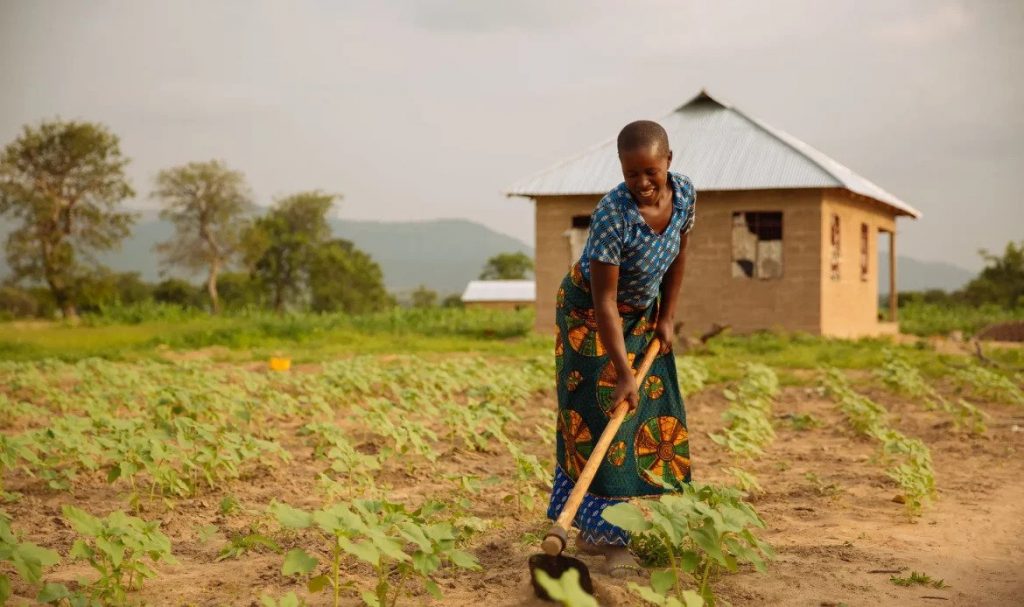
CABI launched the BioProtection Portal in Tanzania, providing growers and advisors essential information for sustainable crop pest and disease management.
The CABI BioProtection Portal is an open-access, digital tool that enables users to find registered biopesticide and biocontrol solutions. With filters for country, crop and pest, users can easily source locally available bioprotection products for their pest problems. The portal’s resources area helps growers and advisors explore the world of bioprotection with valuable information.
The CABI BioProtection Portal is the go-to resource for growers and advisors seeking bioprotection products to meet their needs. It contains a range of environmentally-friendly control options for the pests and diseases of major crops in Tanzania. This includes the fall armyworm and stalk and stem borers on maize.
The portal provides online and offline access from multiple devices, putting valuable information at the fingertips of those who need it.
Dr. Ulrich Kuhlmann discusses the launch
Dr Ulrich Kuhlmann, Executive Director, Global Operations at CABI, stated, “Globally, pests and diseases cause an estimated 40 percent crop loss.” The CABI BioProtection Portal offers a ‘one-stop shop’ for growers. It is designed for those who want to learn about and use biopesticide and biocontrol products. The CABI BioProtection Portal is a priceless resource for growers adopting a more sustainable and safer farming strategy”.
“It is increasingly clear that certain chemical pesticides in agriculture are creating serious human health and environmental concerns. Moreover, the portal will be particularly beneficial for growers looking to reduce their reliance on, or even replace, chemical pesticides. These growers will be promoting a more balanced ecosystem on their farms that will help ensure sustained productivity. In fact, these growers will also more easily meet market or export standards and satisfy consumer demands for healthier and safer food.”
How it works
The CABI BioProtection Portal is an easy-to-use tool. Users simply enter ‘Tanzania’ as their country and select their crop and/or pest in the system. The portal generates a list of bioprotection products authorized by national regulators for that specific search. The portal sources information directly from national governments’ lists of registered pesticides and from partner biocontrol manufacturers.
The CABI BioProtection Portal is available in various countries, including Australia, Bangladesh, Brazil, Canada, Chile, France, India, USA, and more.
The innovative tool has been made available by CABI in collaboration with its network of partner biocontrol manufacturers (Koppert Biological Systems, Syngenta, e-nema, Oro Agri, Idai Nature, Biobest, Applied Bio-nomics, TerraLink, Bio Insumos Nativa, Anatis Bioprotection, Crop Defenders, Andermatt Canada, Biocare and Provivi), sponsors (Nepresso, APIS, Rainforest Alliance, Mondelez International, the International Centre for Genetic Engineering and Biotechnology and Guarany) donors (the Ministry of Foreign Affairs of the Netherlands, the Swiss Agency for Development and Cooperation, African Development Bank, the UK Foreign, Commonwealth and Development Office and the European Commission’s Directorate-General for International Cooperation and Development), associates (BioProtection Global, International Organisation of Biological Control, Biological Agri Solutions of India, the International Biocontrol Manufacturers Association, the Bioagri Input Producers Association,the Pesticides Manufacturers and Formulators Association of India and the Biological Products Industry Alliance) who provide invaluable support in the form of technical inputs, strategic guidance and funding.
